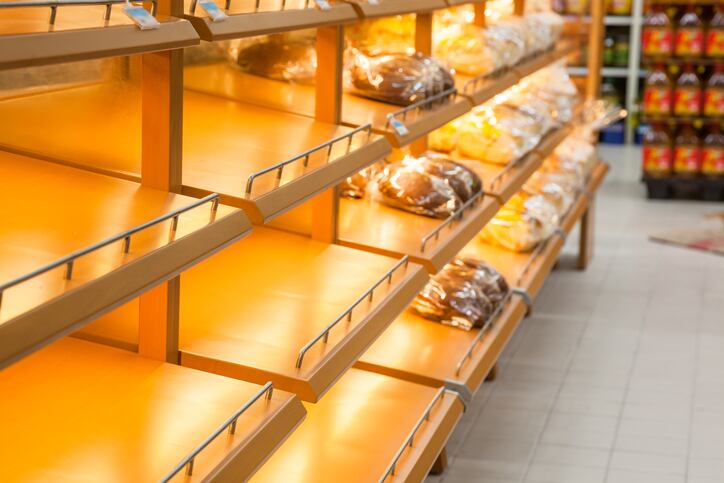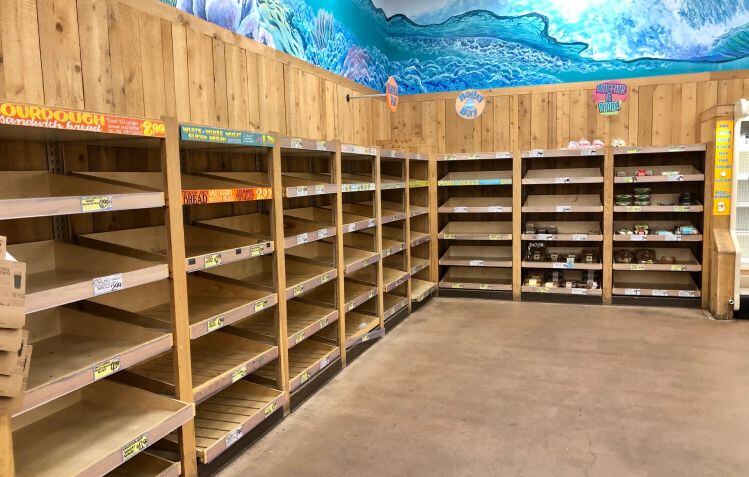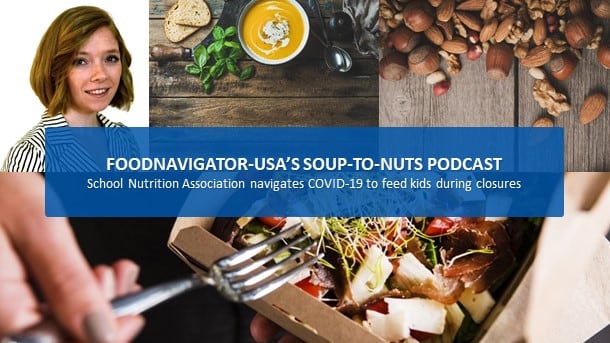“We want to get the message out to consumers and the industry that we have a viable supply chain and they need to be calm. The grocery stores are not shutting down,” but rather will continue to operate as close to normal as possible, even if that means paring back hours to allow for restocking and deep cleaning, Doug Baker, vice president of industry relations at FMI, told FoodNavigator-USA.
“We are obviously seeing consumers respond to the news cycle of the day, and … trying to control what they can control and they are trying to prepare” in case they need to stay home for 14 days or cook additional meals for children who are at home due to school closures, Baker explained.
As a result, he said, the empty shelves many are experiencing “isn’t a supply issue, but rather a demand issue. The supply is fine. The manufacturing facilities are running 24/7.”
While that may be true, what manufacturers are producing is changing in response to the quickly evolving situation.
Baker explained that many retailers are working with manufacturers to identify their top-selling one or two SKUs and then asking them to produce and send only those items so as to efficiently distribute to the most consumers the products with the highest demand.
“As a consumer, we will just need to be prepared because we might not see or find that favorite brand, that favorite flavor or favorite pack size. But we will have that product on the shelf that they can take. They just need to have some flexibility,” he said.
He acknowledged that this strategy may place a squeeze on some emerging brands or startups that share time on co-packing lines as those facilities reshuffle production schedules to meet higher demands for faster selling items.
While this could be a devastating blow to small brands with limited stockpiles or that are working hard to build brand recognition, Baker also said the new production and purchasing patterns could be an opportunity for emerging brands.
“Emerging brands still play a vital role in sustaining our citizens around the country because if there are shortages in some of those core SKUs, then it is the emerging brands that some customers will turn to and so it is an opportunity for them,” Baker said.
The key to balancing these challenges and opportunities will be to keep open lines of communication, he added.
Restaurants, food service providers offer packaged products
Brands may also see increased competition on store shelves from food service providers, potentially including restaurants, which are looking for ways to get existing product into consumers’ hands even as local governments ask them to severely curtail or close their dining-in options.
“We are starting to have cross-sector conversations … from every facet of the supply chain,” with the goal of ensuring consumers have food, Baker said.
For example, he said, some retailers that have suspended food service are repackaging food that would have been available in salad or hot bars as meal kits or other packaged products that consumers can grab-and-go while minimizing the risk of contamination.
He also encouraged retailers to boost their consumer education efforts so that shoppers know how to cook the food that is available.
“This is a great opportunity for Amazon with Alexa. We know many people at home these days need good advice from technology on what do with a chicken or get all kinds of suggestions. So, yes it is a difficult time, but I think people coming away from this probably will also learn some new schools that they might not have had prior,” he said.
And that could be good for grocery sales long-term as consumers develop new habits and cooking skills.
Forecasting for the future
The current run on food at grocery stores likely will abate “at some point” as “consumers will feel like they have what they need in their homes, and they start heeding the advice for social distancing and staying home and not going out,” Baker said.
At that point, he added, “the supply chain will have a chance to catch back up,” and more products will appear on shelves.
While this is good news from a distribution perspective it also comes with a lot of question marks about how to forecast production, sales and budgets in the coming months, Baker said. But he added, even once consumers feel that their pantries are adequately stocked, the industry will want to rebuild its reserves. When that starts to happen, manufacturers will have a bit of warning to adjust product to levels that guarantee sufficient supply without risking food waste.
Recognizing that “days are long and nights are short” as retailers and brands continue to navigate this unprecedented situation, Baker lauded them for their efforts so far.
“I want to applaud them for stepping up, especially given that these people are in communities where they also have families and they might know someone who has been diagnosed, but they are still going to work every day to make sure others have the supplies they need,” he said, adding, “I am impressed daily and how this industry responds to disasters and their communities.”




